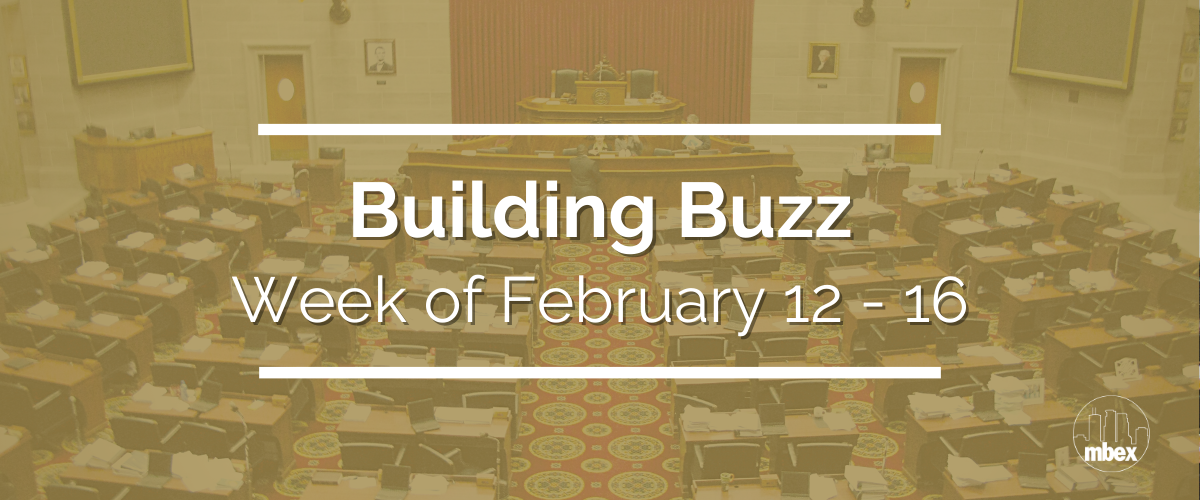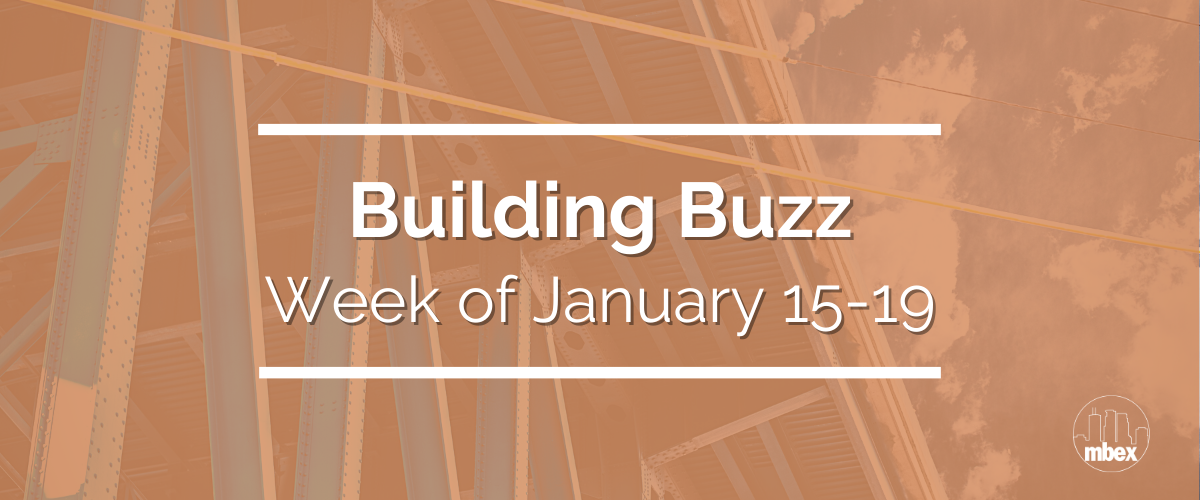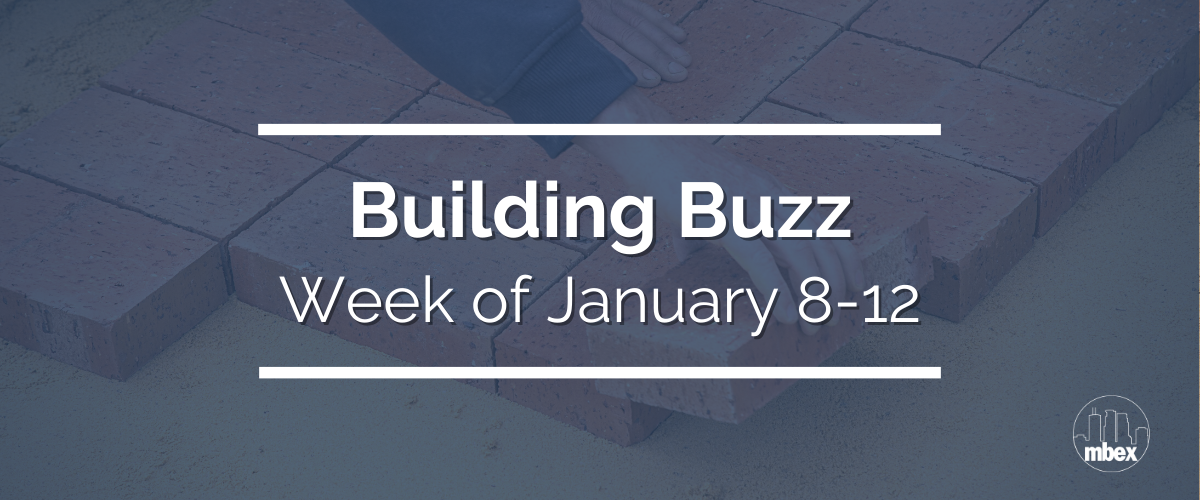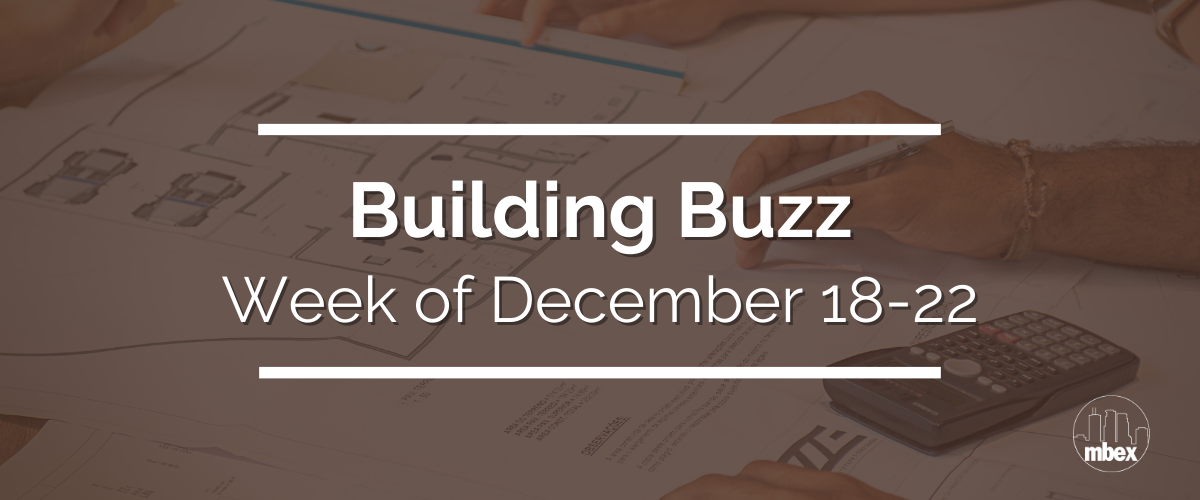Building Buzz: February 12 - 16

We're reading the headlines so you don't have to.
From switching from hard hats to safety helmet, a 1,300-unit development in Duluth, and MSP among 114 airports receiving federal grant money for terminal improvements, here's what was buzzing in the building world the week of February 12 - 16, 2024:
-------
Construction Leaders Recognizing & Responding to the Opioid Crisis
The National Association of Home Builders (NAHB) began expressing concern about opioids to its members in 2015-2016. The Association of Union Constructors (TAUC) Spring 2018 edition of TAUC's Construction User magazine was devoted to the opioid issue with the theme "Confronting the Opioid Crisis: What Contractors Can do Today." The industry leaders highlighted in this article were among the earliest to recognize the need to address opioids in the commercial and industrial sectors of the commercial industry. (2-12-2024 | For Construction Pros)
Developer revises Edina affordable-housing project after community pushback
The revisions reduced the height of the apartment building, added townhome units and removed a second phase of the project --- moves that cut the total number of units in the project from 141 to 89, according to city documents. The Minneapolis developer, Solhem Cos., will seek city feedback in a review this week. (2-12-2024 | Minneapolis / St Paul Business Journal)
First stone-built temple in Middle East avoid modern architecture
Pink sandstone spires decorated with deities and the pious soar above what was once a barren patch of desert between Abu Dhabi and Dubai --- now the site of the first stone-constructed Hindu temple in the Middle East. The soon-to-be open BAPS Hindu Mandir signals how far the United Arab Emirates has come in acknowledging the different faiths of its expatriate community, long dominated by Indians across construction sites and boardrooms. The temple nods back in its seven spires, the number of sheikdoms in this autocratic federation on the Arabian Peninsula. (2-12-2024 | Finance & Commerce)
FPC Live will break ground on Milwaukee music venue in the spring
In November, the Common Council unanimously approved plans for the 4,500-person venue at 1051 North Vel R. Phillips Avenue. FPC Live, an affiliate of Live Nation, originally had plans for two separate venues for $50-million but amended to make one instead. Miron Construction is the general contractor for the project, having recently submitted requests to construct the foundation and footings for $33.9-million, according to an application. The parcel area is around 252,666-square-feet and crews will build a three-story building, city records showed. The project work area will be around 83,750-square-feet. (2-12-2024 | The Daily Reporter)
Health care, housing drive development in Maple Grove
The year ahead looks bright for development in Plymouth, with a major redevelopment of the former Prudential office campus on Bass Lake Road set to break ground this spring and several mixed-use projects proposed or under construction along Highways 55 and 169. (2-12-2024 | Finance & Commerce)
To address traumatic brain injuries, Boldt switches from hard hats to helmets
According to the U.S. Centers for Disease Control and Prevention, deaths related to brain injuries made up 25% of construction fatalities from 2003 to 2010. Construction has the greatest number of both fatal and nonfatal work-related TBIs in the U.S., federal officials added. (2-12-2024 | Finance & Commerce)
ADUs increasingly allowed but infrequently built
Edina could soon become the latest Twin Cities suburb to allow accessory dwelling units, or ADUs. The Edina Planning Commission and City Council will hold public hearings on the matter early this year, with a possible City Council vote to follow. Despite the apparent popularity, ADUs remain relatively uncommon in to the metro area. Eagan, one of the first metro cities to legalize ADUs in 2014, has just three. Richfield, which legalized ADUs in 2017, likely has fewer than 10. Minneapolis has by far the most of any metro city, but its number is still comparatively low: 232 as of early last year, representing fewer than 1% of eligible properties. The region has relatively few ADUs because they're expensive to build and because many municipal ADU ordinances restrict their size, features, building materials, and permitted uses. (2-13-2024 | Finance & Commerce)
Delayed by COVID, Milwaukee affordable housing development breaks ground
The project is a five-story, 55-unit building with 7,500-square-feet of retail space on the first floor at North Dr. Martin Luther King Drive between West Concordia and West Keefe avenues. Milwaukee-based Martin Luther King Economic Development Corp. (MLKEDC) and Wauwatosa-based KG Development together unveiled and launched the project, with the help of federal and local funding. Crews from The Sigma Group will perform site work and Catalyst Construction will be responsible for construction management. (2-13-2024 | Finance & Commerce)
Duluth Council grants TIF to first phase of 1,300-unit development
The TIF district that received a nod of approval was for the first phase of the development. This phase, said ICS Managing Partner Jeff Schiltz, will be made up of two 60-unit condominium buildings, as well as a market rate 220-unit apartment building. The multi-phase development, the proposed Incline Village, will be developed on a former Duluth high school site at 802 East Central Entrance and it could significantly boost the available housing in the city. (2-13-2024 | Finance & Commerce)
Greiner Construction gets new CEO, becomes largest minority-owned business in metro
Greiner Construction has a new CEO and majority owner, and that change makes it the largest minority-owned business in the Twin Cities. Josh Helegesen took over the helm of the Minneapolis-based construction company earlier this year, after serving in various positions with the firm since 2001. Helgesen replaces Hans Siefker, who served as the company's second CEO for over 10 years. (2-13-2024 | Minneapolis - St Paul Business Journal)
Revised Milwaukee music venue to begin construction in April
In November, the Common Council unanimously approved plans for the venue at 1051 North Vel R. Phillips Avenue. FPC Live, an affiliate of Live Nation, originally had plans for two separate venues for $50-million but amended to make one instead. Promoters said the original project was hit by rising construction costs and interest rates; the amended project will cost around $60-million. Now, the promoter is on a timeline to break ground in April and launch full construction in May. Previously, officials said construction will take place on a 18-month timeline and wrap up in 2025. (2-13-2024 | Finance & Commerce)
Bloomington looks to spur more deeply affordable units
Bloomington Housing Development Specialist Kenny Niemeyer said the intention of the Opportunity Housing Ordinance, or OHO, is to meet or exceed the Metropolitan Council's affordable housing goals for Bloomington. He said the goal has been exceeded for number of needed 60% AMI units. For 50% AMI units, the city is about halfway to its goal. For 30% AMI, Bloomington needs 445 units by 2030 but currently only has 32 units under construction. (2-14-2024 | Finance & Commerce)
Highway 10 expansion up for comment
The project will address deficiencies and accommodate future development and redevelopment in the area, according to an Environmental Assessment Worksheet released by MnDOT. The meeting is set for March 14 and will discuss the highway's expansion in Wadena and Otter Tail counties. (2-14-2024 | Finance & Commerce)
Mayo Clinic's Rochester expansion so big, even building permits cost $22 million
The Post Bulletin has a report on how Mayo's "Bold. Forward. Unbound. in Rochester" initiative is already impacting the city even though the project has barely left the ground. With a project this size --- the health care giant's plans will include 2.4--million-square-feet of space and stretch over years --- pretty much all the impacts are big. (2-14-2024 | Minneapolis / St Paul Business Journal)
Minnetonka rejects plans for single-family homes, condos
Minnetonka-based Lake West Development had put forward revised proposals for different parts of the city; one of them for two 20-unit condominium buildings and another for 14 single-family home lots. Both of the proposals were shut down after the council largely argued that the developments did not meet the requirements for rezoning or variance approvals, including for tree removal. (2-14-2024 | Minneapolis / St Paul Business Journal)
Project receives environmental OK in Hastings
The city recently determined that Land REquity Development's proposed 511-unit Walden at Hastings project does not need an Environmental Impact Statement. An EIS is required when a project is deemed to have significant adverse impacts on the environment. The 71.1-acre development site is just east of Highway 316 and Michael Avenue in Hastings. Included in the plans are single family, twin home, townhome, apartments and senior housing. About 17.5-acres of natural areas will be reserved. (2-14-2024 | Finance & Commerce)
Vintage Duluth school reopens as apartments
Saturday Properties, working with Kraus-Anderson on construction and AWH Architects on design, developed the $34.9-million adaptive reuse project, which created 122 apartments within the well-preserved bones of Historic Old Central High School. Construction began in May 2022 and wrapped up in January. Now known as Zenith DCHS, the building is about 50% leased. (2-14-2024 | Finance & Commerce)
Wisconsin lawmakers want parking structure inspections after collapse
Lawmakers are making a bipartisan proposal to require owners to inspect parking structures every five years or else face fines, following a parking garage's partial collapse at the Bayshore Town Center in Glendale one year ago. The drafted rules would require parking structure owners to work with engineers and inspect their garages every five years; bridges across the state are inspected every two to four years. They hope to have the proposal numbered and voted on before the end of the legislative session next month. (2-14-2024 | Finance & Commerce)
Asset preservation takes early bonding spotlight
Up for review at the meeting was Gov. Tim Walz's $982-million bonding recommendation, also known as the 2024 Infrastructure Plan, which includes $441-million for asset preservation --- 45% of the total package. The asset preservation line item addresses needs at state buildings and college campuses throughout Minnesota. Most of it would go to the University of Minnesota and the Minnesota State University systems ($103-million each) and state agencies ($224-million). (2-15-2024 | Finance & Commerce)
Minneapolis-St Paul International Airport adding gates to Terminal 2 with $20M federal grant
The $20-million grant was part of President Biden's 2021 bipartisan infrastructure deal, which awarded $5-billion to the Federal Aviation Administration's Airport Terminals Program. The two new gates, which will become H15 and H16, will be located on the terminal's northern side, just past gates currently served by Southwest Airlines. Terminal 2 is MSP's smaller terminal and primarily services airlines such as Sun Country, Allegiant, Condor, Frontier, Icelandair, JetBlue and Southwest. (2-15-2024 | Minneapolis/St Paul Business Journal)
MSP among 114 airports receiving federal grants for terminal improvements
The Biden administration said it is providing $970-million for improvements at 114 airports around the country, with work ranging from wider concourses and new baggage-handling systems to new terminals at some small airfields. Administration officials said the money comes from a $5-billion grant program to modernize airport terminals. Four airports in Minnesota are set to receive funding this year to improve terminals. Bemidji Regional Airport will get $261,250; Two Harbors Municipal Airport will receive $1.14-million; Duluth International Airport will get $10-million; and Minneapolis-St. Paul International Airport will receive $20-million. (2-15-2024 | Finance & Commerce)
Microsoft buys land for data center in Becker
This week, the technology giant with headquarters in Redmond, Washington, closed on a deal to pay $17.7-million in cash for the data center development site, a multi-parcel, 295-acre property at 125th Avenue and Southeast River Road in Becker, according to a certificate of real estate value made public. Xcel Energy, doing business as United Power and Land Co., is the seller. The property is adjacent to Xcel Energy's Sherco Coal Plant, which will be decommissioned by 2030. Project detail and a construction timeline remain somewhat of a mystery. (2-16-2024 | Finance & Commerce)
Report suggests industrial market bouncing back
The two reports, one on the national performance of the industrial market and one on the local Twin Cities performance, indicated that the market showed the beginnings of a bounce-back after three quarters hampered by high interest rates. The Minneapolis report highlights the Eagle Realty Group's purchase of a four-building portfolio, a recapitalization deal made alongside Capital Partners in late October. It also points to the $33-million price tag for an Arden Hills warehouse that was bought by Altus. (2-16-2024 | Finance & Commerce)











